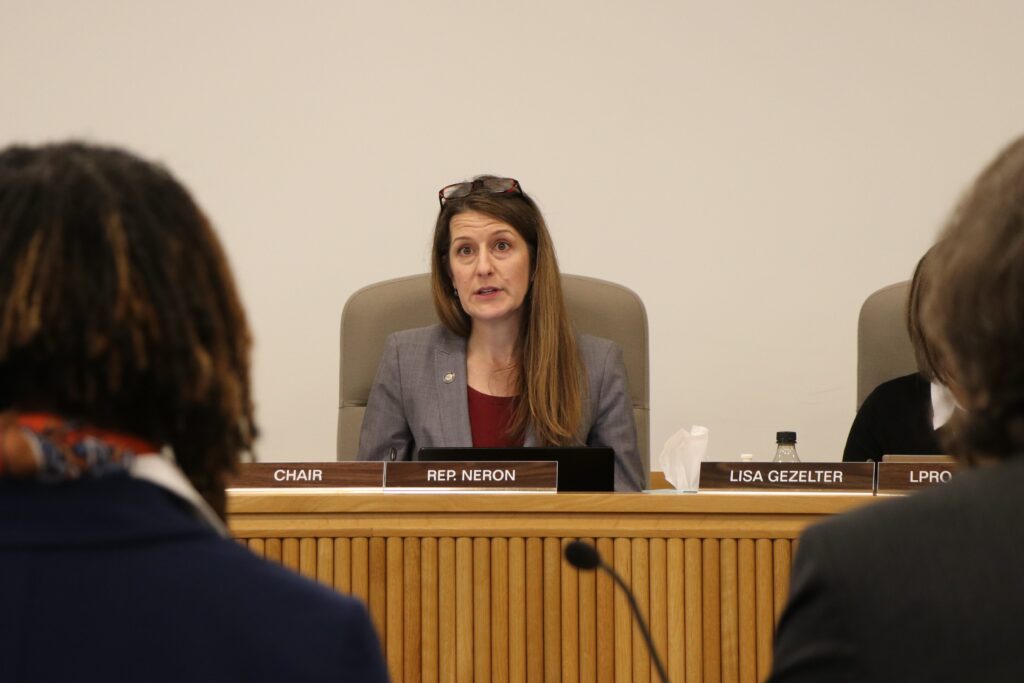
Rep. Courtney Neron, Interim House Education Committee chair, showed deep interest Tuesday in Oregon Department of Education Director Charlene Williams’ testimony about ODE’s new accountability framework.
“Accountability” is one of the watchwords for education policy work leading into the 2025 legislative session.
The Oregon Department of Education has offered legislators a starting point for those discussions.
Accountability in Oregon’s education system must include a focus on students, a shared and reciprocal responsibility and “consistent, dedicated and clear funding mechanisms,” ODE Director Charlene Williams told the Interim House Education Committee.
House Bill 2656 (2023) charged ODE with setting up an advisory committee to review Oregon and other states’ accountability systems and to make recommendations. ODE presented the resulting framework, “A Renewed Vision for Oregon’s Accountability System,” to the Legislature on Tuesday.
The framework will provide a template for ODE and Gov. Tina Kotek to develop a plan with concrete steps, supportive legislation and connected funding. OSBA and other education partners worked closely with the committee for months.
OSBA Executive Director Emielle Nischik said school districts embrace accountability for student success while state agencies and legislators also are accountable for providing the support, funding and policy environment schools need.
“The entire system needs to be held accountable for student success, and we wholeheartedly support clarifying who is responsible for what at every layer,” Nischik said. “One size doesn’t fit all, and we want to make sure that local educators and school boards can keep making the best decisions for their communities.”
Oregon hasn’t really had a framework for steering the system, according to Misael Flores Gutierrez, ODE innovation and partnership strategist. Instead, it has an “accountability ecosystem,” he told the committee.
Oregon’s education system works within a complex web of federal and state oversight, funding sources, outcome goals and directives. ODE’s framework aims to create a more coherent system and clarify roles and responsibilities from the classroom to the Legislature.
ODE’s recommendations fall into four categories:
- Improving Oregon’s public transparency and data sharing.
- Reviewing Oregon education funding and supporting specific needs.
- Simplifying state grant requirements and reporting.
- Measure effects and then taking action.
The framework looks at priorities for students, the levers available to reach those goals and the data needed to check progress and make corrections. The framework lays out more than a dozen specific recommendations.
Among the recommendations, the committee is proposing new ODE communication efforts to share school data and legislation to align and reduce district reporting and grant applications. The report also notes that small and rural school districts need additional help with all the paperwork.
“Oregon is at a critical juncture,” Williams wrote in the report. “We cannot keep hoping for incremental change. This is a chance to renew our vision for educational accountability and commit to real partnership.”
The document specifically calls for “providing adequate funding that meets the specific needs of Oregon’s students.”
Rep. Courtney Neron, committee chair, noted that much of the rest of the hearing’s agenda revolved around schools’ unmet fiscal needs, from facilities maintenance to special education funding.
Lori Sattenspiel, an OSBA consultant and former director, raised the issue of accurate fiscal impact statements that capture the true costs for schools. She said the Legislature’s expansion of unemployment benefits, for instance, increased school expenses more than expected while schools did not receive anything extra for the added cost.
Neron, D-Wilsonville, has christened such unfunded mandates as “Financially Unsupported Education Requirements,” and she is determined to root them out.
Neron said the recent work to match Kotek’s proposed State School Fund to school districts’ actual expected costs is allowing a deeper conversation about student needs.
“We have a starting point that feels a lot more like now we can have conversations about what does an investment budget looks like,” she said in the hearing.
– Jake Arnold, OSBA
[email protected]